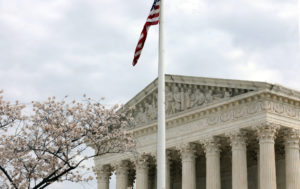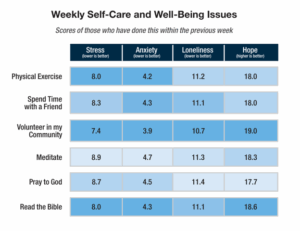
NASHVILLE, Tenn. (BP)–Southern Baptist seminaries and church pews are filled with people who never heard the catch phrases used during the years of controversy in the convention. Out of the moderate camp came references to unity in diversity, authentic pluralism, doublespeak and crass secular political methodology. Conservative apologists spoke of theological integrity, Ruschlikon, while challenging the Gatlinburg Gang and interpretive history.
Baptist historian Jerry Sutton, pastor of Two Rivers Baptist Church, Nashville, Tenn., provides the context and clarification of such terms. In his newly released book, “The Baptist Reformation,” he tells the story behind the phrases that filled the conversation and publications of Southern Baptists during the 1980s and 1990s.
Published by Broadman & Holman, the trade books division of LifeWay Christian Resources of the Southern Baptist Convention, Sutton’s book is the most thorough recounting of the years of the conservative resurgence in a single volume. While acknowledging his own active participation in the conservative cause, Sutton offers the views of both sides in the debate between moderates and conservatives to substantiate his conclusions.
He brings back to memory the impassioned preaching of Roy Honeycutt regarding “holy war,” Russell Dilday appealing for “higher ground,” W.A. Criswell’s challenge of “whether we live or die,” James Robison asking, “Where are the prophets?” and R. Albert Mohler Jr.’s “What mean these stones?”
LifeWay President James T. Draper Jr. observes in his foreword to the book that Sutton provides a new dimension to the history of the controversy by interacting with past interpreters of the controversy. Sutton challenges the reasoning and conclusions of earlier histories by moderates Bill Leonard, Walter Shurden and Grady Cothen to whom secular analysts often turn for an explanation of the dramatic change in the nation’s largest non-Catholic denomination.
While earlier historians have quoted diverse opinions, Sutton provides extensive quotations from primary sources drawn in context from published statements and writings. The 48-page section of footnotes reveals the extent of Sutton’s research.
“Carefully, Jerry Sutton describes the drift that was carrying Southern Baptists away from their biblical roots toward relativism and secularism,” Draper writes. “He traces the mounting tension between the SBC agency and institutional leadership and the conservative foundation of the denomination.”
Sutton’s intended audience goes beyond the academic community. Aimed at “the average mom-and-pop Baptist,” Sutton tells of writing for “pastors, deacons, Sunday school teachers and laypeople who want to know the inside story of what really happened and why.”
The Baptist Reformation, to be released by June, will be available at LifeWay Christian Stores across the country, or it can be ordered through the bookstores’ toll-free number, 1-800-233-1123, or Internet site, www.lifewaystores.com.
Sutton’s own involvement with Southern Baptists provided diverse ministry settings — as an evangelism teacher at Southwestern Baptist Theological Seminary in Fort Worth, Texas, where he earned a Ph.D. in church history, and adjunct professor at Southern Baptist Theological Seminary, in Louisville, Ky.; pastor of Wedgwood Baptist Church in Fort Worth and the last 14 years at Nashville’s Two Rivers Baptist Church. He served as a trustee of the Baptist Sunday School Board (now LifeWay), chaired the SBC Resolutions Committee in 1988 and served on the Tennessee Baptist Convention’s executive board. He currently is president of the SBC Pastors’ Conference.
Sutton shares the conviction of other Baptist historians who point to the Elliott controversy in the early 1960s as the beginning of a 20-year struggle, which erupted in 1979. The 1961 release by Broadman Press of Midwestern Baptist Theological Seminary professor Ralph Elliott’s historical-critical interpretation in “The Message of Genesis” revealed for conservatives a growing problem in SBC academic circles.
Had Southern Seminary President Duke McCall acknowledged the divergent theology of the 13 professors he fired in 1958 for insubordination, Sutton believes the later crisis might have been prevented. “Perhaps at that point, the leftward drift could have been nipped in the bud” by Midwestern and Southeastern where the dismissed professors found new opportunities to teach, Sutton writes.
“If seminary presidents had admitted they had some problems and had sought to address and correct them, the emerging movement might have been stopped in its tracks,” Sutton continues. “After all, most conservatives simply wanted the assurance that our seminaries would assume a position of biblical inerrancy.”
Instead of imagining the moderate dream of a return to a pre-1979 Southern Baptist Convention, Sutton suggests that critics look at Mercer University President Kirby Godsey’s “provocative and heretical masterpiece” titled, “When We Talk About God … Let’s Be Honest,” to imagine a convention without a conservative resurgence.
Briefer accounts of the years of controversy have projected how selected events might have been handled differently. Sutton’s detailed account of skirmishes at each of the SBC entities provides an overwhelming number of conservative complaints that touched every area of the SBC bureaucracy.
The first part of The Baptist Reformation addresses what Sutton terms theological inadequacy and institutional bureaucracy in describing the scope of the problem. Sutton notes that the convention’s mid-’80s Peace Committee confirmed what conservatives had said all along — “the issue in the Southern Baptist Convention was primarily theological, especially concern over the nature and the authority of the Bible.”
Recognizing that moderates believed the interpretation of Scripture to be the point of disagreement, Sutton provides wide-ranging examples of Southern Baptist interpreters “clearly outside the boundaries of traditional Baptist interpretation of Scripture.” Cited are:
— Eric Rust’s 1959 paper on “The Challenge of Modern Science” in which he viewed Scripture as a parable, but not authoritative nor historically accurate.
— Elliott’s argument for a hermeneutical model that regards the first 11 chapters of Genesis as “a theological preface to the remainder of the book” and presuppositions that biblical writers borrowed and adapted earlier myths and legends.
— G. Henton Davies’ denial that God had ordered Abraham to kill Isaac, which appeared in the Genesis-Exodus volume of the Broadman Bible Commentary;.
— Southern Seminary professor E. Glenn Hinson’s 1977 publication, “Jesus Christ,” which Sutton says challenged and questioned many biblical declarations and assumptions relating to reliability of the Bible and the resurrection of Christ.
— Midwestern professor Temp Sparkman’s “The Salvation and Nurture of the Child of God” from 1983 which Sutton says equates child developmental psychology with growth and development as a child of God, arguing that all people are already saved because all people are already children of God.
— Southern President Roy Honeycutt’s commentaries on Exodus, 1 and 2 Kings and Hosea in which Sutton says there were “clear denials of what the Scripture teaches.” He cites commentary questioning traditional accounts of Moses and the burning bush, Elijah calling down fire, the miraculous restoration of life to the Shunamite woman’s son, and the floating ax head.
— Southern professor Molly Marshall Green’s tendencies toward universalism.
— Southern professor Paul Simmons’ pro-abortion stance and tolerance of homosexuality.
“Repeatedly, moderates and those sympathetic to them argued for freedom and liberty of interpretation,” Sutton writes. “Yet one man’s liberty is another man’s heresy. And much of what has been taught among Southern Baptists has clearly been heretical in nature.”
Sutton then states his case that denominational leadership enabled and protected the aberrant theology found in many seminaries. Though conservative in their theology, SBC leaders like Herschel Hobbs, who chaired the committee that drafted the 1963 Baptist Faith and Message confessional statement, and Robert Naylor, president of Southwestern Seminary, were among those calling for “unity in diversity.”
Through extensive quotations from Naylor’s memoirs, Sutton tells of convention leaders whose primary loyalty was to the denomination — naively believing that “the democratic process functioned apart from behind-the-scenes workings.” Through the testimonies from leaders in both camps, Sutton shows that a “good ole boy” system protected theological diversity to which grassroots Southern Baptists would object.
C.R. Daley, state paper editor in Kentucky, conceded that moderates campaigned for Sunday School Board President James L. Sullivan to be elected SBC president, adding he was “used by some of us to head off Adrian Rogers.” Sutton also quotes Daley as crediting the “old-line strongly established papers” with remaining loyal to maintaining the status quo to hold off conservatives.
Using Southwestern missions professor Cal Guy’s reference to the SBC as “the most tightly controlled denomination in America,” Sutton relates Guy’s assessment of five components of institutional bureaucracy. As a former trustee of the Foreign Mission Board, Guy saw many of these elements firsthand:
— controlling appointments to maintain a perceived balance of power.
— trustees functioning as rubber stamps for administrations.
— reinforcement and maintenance of the status quo by the press.
— wielding of disproportionate influence by denominational executives.
— control of denominational machinery.
Offering evidence of his assessment, Sutton believes many denominational leaders used their power to orchestrate elections, including former SBC President Louie Newton of Atlanta; New Orleans pastor J.D. Gray; Duke McCall; Kentucky pastor Wayne Dehoney; WMU President Marie Mathis; Foreign Mission Board Presidents Baker James Cauthen and Keith Parks; and Southwestern Seminary President Russell Dilday. While conservatives managed to win in public prior to 1979, they suffered private losses as denominational leaders and sympathetic trustee boards thwarted the will of the convention as expressed in annual meetings, Sutton recounts.
A second part of the book provides a chronological account within the context of presidents elected by a growing conservative majority. His interviews with former presidents provide interesting reflections years later. Draper, for example, reveals the snubbing he received from the Foreign Mission Board when he attempted to carry on the tradition of the SBC president visiting missionaries on the field.
“I traveled through 21 customs offices in the 26 days,” Draper recalled. “I was generally well-received, but faced hostile questions from missionaries at every stop. The propaganda put out by the Foreign Mission Board at that time was enormous, and the prejudice against conservatives was immense.”
Within this section, The Baptist Reformation offers the first extensive attempt to summarize the minutes of the Peace Committee which were sealed until 1998. The collection of letters, complaints, interviews and transcribed deliberations fills several file cabinet drawers, with complete sets housed at each of the seminaries. Sutton conveys the overwhelming challenge members faced in trying to resolve the differences of constituents within the convention.
Institutional changes are covered in the third section as Sutton provides new material drawn from the testimony of conservatives who waged battle at different SBC agencies. Particularly revealing is the account of Lloyd Elder’s demise at the Sunday School Board. Having served as a BSSB trustee during those years, Sutton offers a thorough treatment. He notes the inability of the beleaguered president to respond to a war on two fronts as he dealt with employee Lee Porter’s intemperate criticism of conservative leadership and Leon McBeth’s interpretive history of the BSSB.
In a final section Sutton analyzes and interprets changes instituted by conservatives. After tracing the roots of the inerrancy movement, he pinpoints the dispute over the nature of the Bible itself and its essential trustworthiness.
As the writer of the controversial resolution on the priesthood of the believer, Sutton clarifies the objectives of the Resolutions Committee in the well-publicized San Antonio convention in 1988.
Without a conservative resurgence, Sutton concludes, there would have been a massive departure of conservative churches and continuing theological erosion. Seeing the SBC as a vehicle for fulfilling the Great Commission, Sutton believes theological education and world missions were threatened by theological compromise. “Had it not occurred, the Southern Baptist Convention would have found itself drifting steadily to the left and eventually would have been in the same anemic theological condition as the mainline Protestant denominations, powerless to effect change in our spiritually starving world,” Sutton writes.
By 1991, moderates had abandoned their challenge of nationally elected leadership, Sutton recounts, putting their energies in the “stealth denomination” known as Cooperative Baptist Fellowship, the Texas-based Baptists Committed or the more leftward-focused Baptist Alliance based on the East Coast. Sutton says he believes the only reason the CBF does not constitute as a denomination and withdraw from the SBC is because of the difficulty affiliated churches would have with the separation.
A lack of financial resources with which to challenge conservatives is cited by one moderate in Sutton’s book as the cause of the moderate downfall. Moderate pastor Kenneth Chafin, meanwhile, often stated that Paige Patterson, now president of the SBC, Criswell and Judge Paul Pressler were after “money and power” in their quest for victory.
A cursory review of more than 100 people Sutton identifies as leading the charge for conservatives, however, shows that very few of them attained powerful positions. Most returned to the daily life of pastoring average-sized churches, and some faded into obscurity. Nearly all of the moderate leaders he lists found places of service in organizations and academic institutions more to their liking. Many of them continue to criticize SBC leadership, and a few moved on to more liberal denominations.
In the early years of controversy, Sutton writes, moderates controlled public perception of the debate through a network of state Baptist newspaper editors like Daley in Kentucky and denominational employees like W.C. Fields of Baptist Press.
But conservatives quickly learned the power of the press. Among the newspapers and books Sutton credits with communicating conservative convictions are Bill Powell’s Southern Baptist Journal, Harold Lindsell’s “The Battle for the Bible,” Russell Kaemmerling’s Southern Baptist Advocate (later edited by Robert Tenery), W.A. Criswell’s “Why I Preach That the Bible Is Literally True” — a title imposed upon the author by the BSSB, L. Rush Bush and Tom J. Nettles’ “Baptists and the Bible” and Draper’s Authority: the Critical Issue for Southern Baptists.
Sutton reserves his highest praise for James C. Hefley’s six-volume “Truth in Crisis” that served to rebut what Richard Land, now president of the SBC’s ethics agency, identified as a misinformation campaign by moderates. “He laid out the facts. He had the evidence. He was an eyewitness,” Sutton quotes Land as saying of Hefley. The journalistic and reportorial style proved an effective weapon in convincing others of their cause, Land said.
“History has well said that the pen is mightier than the sword,” Sutton concedes.
But it was the “power and influence of strategic pulpits and strategic pastors” that Sutton says demonstrated “that the pulpit is mightier than the pen.”
Among the best known and most often vilified, Sutton labels Criswell as the ideological godfather, Pressler as the organizer and strategist and Patterson as the apologist.
Sutton closes his book with a hopeful forecast, praising the vitality of the SBC, noting record-breaking gifts to the Cooperative Program, an emphasis on prayer, a growing desire to care for pastors, purpose-driven churches, disaster relief and transitioning to a new structure, all the while retaining an evangelistic priority.
For the most part Sutton lets history serve as the only warning of what can happen when aberrant theology is left unchecked and bureaucratic maneuvering clouds the vision. Out of Sutton’s interview with Adrian Rogers comes a clear caution: “There has always been a `good ole boy’ system, and I think we conservatives have to be careful that we don’t perpetuate the good ole boy system with ourselves being the good ole boys.”















